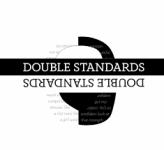Absolutely — and the double standards are louder than a stadium full of angry fans.
When it comes to penalties, fines, bans, or media backlash, male and female athletes are often judged by two completely different rulebooks. While the rules may be the same on paper, the enforcement and reaction couldn’t be more different in reality.
Take Serena Williams’ infamous outburst at the 2018 U.S. Open. Her emotional reaction earned her a fine, global criticism, and questions about her professionalism. Meanwhile, male tennis stars like John McEnroe and Nick Kyrgios have thrown epic tantrums on the court — sometimes even worse — yet faced far less criticism or long-term reputational damage. Why? Because society often views male aggression as “competitive fire” and female anger as “hysterical behavior.”
The bias isn’t just in behavior — it extends to doping bans, dress code violations, and on-field conduct. Male athletes have received lighter penalties or quick forgiveness for the same infractions where women face longer bans, harsher media scrutiny, or even career-ending consequences. When a female athlete fails a drug test, she's often labeled as “disgraced.” For a man, it’s a “comeback story waiting to happen.”
Then there’s the unequal scrutiny of appearance and conduct. Women are penalized for their sports bras, their protests, or even just speaking out — while men are praised for their “bold statements” or “leadership.” Naomi Osaka skipped a press conference for mental health reasons and got backlash. When male athletes have done the same, they were often met with understanding or even applause.
The core issue? Gender stereotypes. Male athletes are expected to be aggressive, dominant, and outspoken. Women are still expected to be composed, graceful, and “grateful” just to be on the field. This outdated mindset feeds into how punishments are handed out — not just by governing bodies, but by fans, sponsors, and the media.
It’s time for sports to wake up. The rules can’t change depending on who’s breaking them. Fairness in punishment isn't about special treatment — it's about equal treatment. Until then, the game may be equal in theory, but rigged in reality.
When it comes to penalties, fines, bans, or media backlash, male and female athletes are often judged by two completely different rulebooks. While the rules may be the same on paper, the enforcement and reaction couldn’t be more different in reality.
Take Serena Williams’ infamous outburst at the 2018 U.S. Open. Her emotional reaction earned her a fine, global criticism, and questions about her professionalism. Meanwhile, male tennis stars like John McEnroe and Nick Kyrgios have thrown epic tantrums on the court — sometimes even worse — yet faced far less criticism or long-term reputational damage. Why? Because society often views male aggression as “competitive fire” and female anger as “hysterical behavior.”
The bias isn’t just in behavior — it extends to doping bans, dress code violations, and on-field conduct. Male athletes have received lighter penalties or quick forgiveness for the same infractions where women face longer bans, harsher media scrutiny, or even career-ending consequences. When a female athlete fails a drug test, she's often labeled as “disgraced.” For a man, it’s a “comeback story waiting to happen.”
Then there’s the unequal scrutiny of appearance and conduct. Women are penalized for their sports bras, their protests, or even just speaking out — while men are praised for their “bold statements” or “leadership.” Naomi Osaka skipped a press conference for mental health reasons and got backlash. When male athletes have done the same, they were often met with understanding or even applause.
The core issue? Gender stereotypes. Male athletes are expected to be aggressive, dominant, and outspoken. Women are still expected to be composed, graceful, and “grateful” just to be on the field. This outdated mindset feeds into how punishments are handed out — not just by governing bodies, but by fans, sponsors, and the media.
It’s time for sports to wake up. The rules can’t change depending on who’s breaking them. Fairness in punishment isn't about special treatment — it's about equal treatment. Until then, the game may be equal in theory, but rigged in reality.

